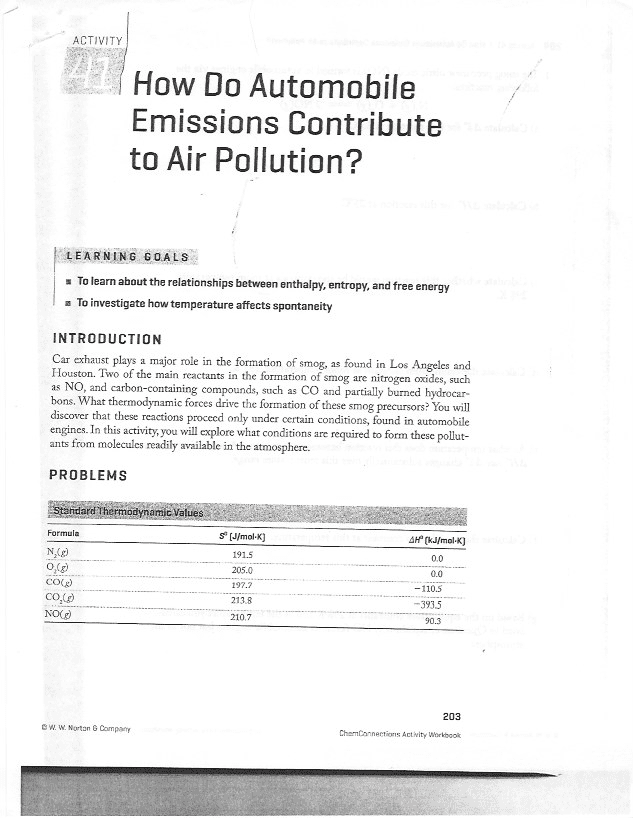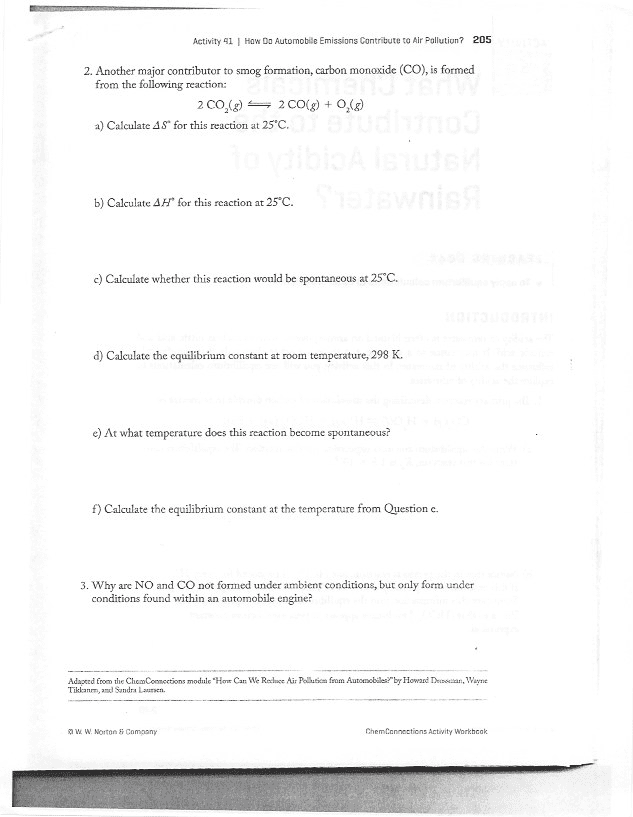CHEM 107 Lecture Notes - Lecture 18: Chemical Thermodynamics
26 views2 pages
7 Apr 2016
School
Department
Course
Professor
Document Summary
Delta s of the universe is greater than zero for a spontaneous change. Free energy is g=h-ts: g is a state funcion and predicts spontaneity, this is the central equaion in chemical thermodynamics. A spontaneous reacion has delta g less than zero: delta g also tells the max amount of energy which can be produced and used to do work. If delta h is less than zero it is exothermic and favors spontaneity. If delta s is greater than zero, entropy increases and it favors spontaneity. If both delta h and delta s are greater than zero then it is only spontaneous at suiciently high temperatures. If both delta h and delta s are less than zero then it is only spontaneous at suiciently low temperatures. All phase change are determined by delta g: phases are in equilibrium when delta g = zero, p-t phase diagrams tell what phrases are stable at various values of t and p.
Get access
Grade+
$40 USD/m
Billed monthly

Homework Help
Study Guides
Textbook Solutions
Class Notes
Textbook Notes
Booster Class
10 Verified Answers
Class+
$30 USD/m
Billed monthly

Homework Help
Study Guides
Textbook Solutions
Class Notes
Textbook Notes
Booster Class
7 Verified Answers
Related textbook solutions
Chemistry: Structure and Properties
2 Edition,
Tro
ISBN: 9780134293936
Basic Chemistry
5 Edition,
Timberlake
ISBN: 9780134138046
Principles of Chemistry Molecular Approach
4th Edition,
Tro
ISBN: 9780134112831
Chemistry: Structure and Properties
2nd Edition,
Tro
ISBN: 9780134293936
Principles of Chemistry Molecular Approach
3rd Edition, 2014
Tro
ISBN: 9780321971944
Chemistry: A Molecular Approach
3rd Edition,
Tro
ISBN: 9780321809247
Chemistry: A Molecular Approach
5th Edition,
Tro
ISBN: 9780134874371
Principles of Chemistry: A Molecular Approach
4th Edition,
Tro
ISBN: 9780134895741
Chemistry: The Central Science
14th Edition, 2017
Brown
ISBN: 9780134414232


